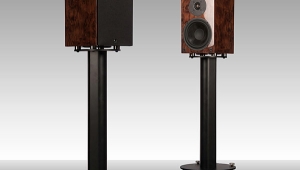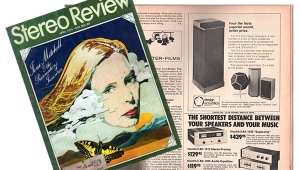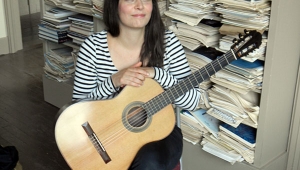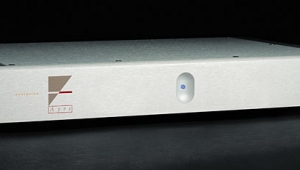| Columns Retired Columns & Blogs |
The Fifth Element #57
Ah me, another year gone by. The rest of my holiday-gift suggestions are at the end of this column, but I wanted to kick off with a hearty recommendation of Aja, a book by Don Breithaupt. You may recall Breithaupt as a co-author (with his brother, Jeff) of the survey Precious and Few: Pop Music in the Early '70s, which cracked me up in my October column.
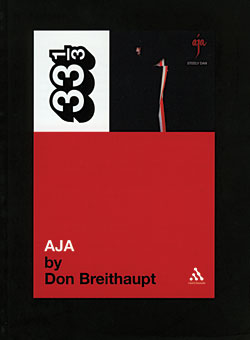 In a more serious vein, Breithaupt has devoted an entire, albeit small (130pp), book to Steely Dan's magnum opus: their 1977 album, Aja. Breithaupt's Aja is no.46 in the 331/3 series of monographs published by Continuum, each devoted to a single album. Other series selections run from the obvious (the Beach Boys' Pet Sounds, Joni Mitchell's Court and Spark) to the not-so-obvious (the Smiths' Meat Is Murder, ABBA's Gold). Aja is the first one I've read, but I'll be checking out others. Highly recommended.
In a more serious vein, Breithaupt has devoted an entire, albeit small (130pp), book to Steely Dan's magnum opus: their 1977 album, Aja. Breithaupt's Aja is no.46 in the 331/3 series of monographs published by Continuum, each devoted to a single album. Other series selections run from the obvious (the Beach Boys' Pet Sounds, Joni Mitchell's Court and Spark) to the not-so-obvious (the Smiths' Meat Is Murder, ABBA's Gold). Aja is the first one I've read, but I'll be checking out others. Highly recommended.
One thing that distinguishes Breithaupt's work from nearly all the rest of the commentary about both Steely Dan and Aja is that he received active cooperation from Donald Fagen, a famously private artist. There are no blinding new revelations, but there is a depth to the musical analysis that I assume comes at least in part from Fagen's participation. The other side of that coin is the only caveat I offer about what is otherwise a general-interest—and very interesting—book.
Steely Dan's musical structures are, as far as I know, the most complex (and the most off-kilter) of any group that achieved consistent mainstream commercial success. I find Steely Dan's musical structures, especially their chord structures, far more novel and challenging than anything offered by, say, Emerson, Lake, and Palmer, or Yes. I can imagine some readers poring over Breithaupt's harmonic analyses and saying, "Wow, I never realized that before," while others might simply despair of ever making sense of something like "Cmaj7 G2/B | Bbmaj7 F2/A," which are the symbols for the opening chords of "Deacon Blues." Those four chords are played once, then repeated a whole step up. The "Ah-ha" moment is when you realize that the opening gesture's motion is harmonically upward but melodically downward—as good an example as anything of Walter Becker and Donald Fagen's chronic ambiguity. No wonder it took them 18 months to record 39 minutes of music.
In fact, the musical tension between upward aspiration and downward falling of that opening passage of "Deacon Blues" is a tone-picture of the song's protagonist's state in life, which Fagen once characterized as "exalted loserdom." What a wonderful phrase. So there is a point to all the music theory—and anyway, by now you know my usual advice about borrowing from or giving to libraries.
ATC SCM 11 loudspeaker: $1750/pair
The venerable British company ATC Loudspeaker Technology was founded in 1974 by Billy Woodman, and is famous within the professional community for developing the first soft-dome midrange driver, and for their well-regarded line of active (powered) studio monitors, the user list of which is a veritable Who's Who of mastering engineers. ATC loudspeakers are all still made in the UK, and were a favorite of the late J. Gordon Holt.
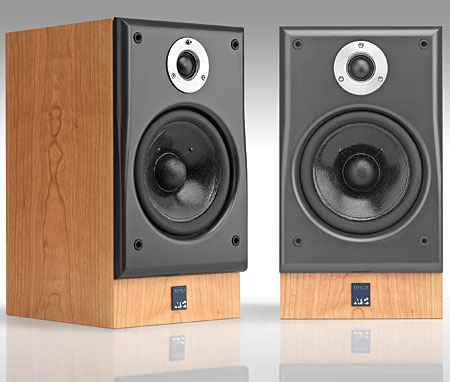
I requested a pair of ATC's SCM 11 passive monitors because its price of $1750/pair in real cherry veneer (or $1850/pair in black ash) fit into my quest to find affordable systems in the $2500–$3750 range. I didn't realize until I removed the SCM 11 from its cloth bag that its bass loading is sealed-box; had I known that, I would have requested them even earlier. (ATC's larger designs are ported.)
ATC's lineup of consumer speakers includes one model below the SCM 11, the SCM 7, which has a 5" mid/woofer and costs $1050/pair. The SCM 11 has Constrained Layer Damping (CLD) on its cone but doesn't share the Super Linear magnet technology found in the SCM 19, a superficially similar two-way with the same size woofer in a larger cabinet. The SCM 19 costs $3150/pair, which puts it outside the limits of this hunt for affordable systems (though it looks very tempting). Super Linear technology is claimed to reduce third-order harmonic distortion 10–15dB between 100Hz and 3kHz, which makes me eager to hear it. Nonetheless, the SCM 11's CLD cone is claimed to reduce distortion between 300Hz and 3kHz by an unstated amount.
The SCM 11 is a stand-mounted two-way design with a 1" soft-dome tweeter with a neodymium magnet structure and a waveguide of some proprietary alloy, and a 6" mid/woofer. Although the cabinets of the review pair I received were veneered in cherrywood (with exceptional matching across the pair), the drivers are inset in a baffle board that sits proud of the cabinet face and covers all but its bottom few inches (which are veneered). The baffle is made of some sort of composite, and finished in a soft piano-black semigloss. Black fabric grilles on MDF frames attach to the speaker with plastic pins, but I didn't use them. A recess in the rear panel holds two pairs of sturdy, knurled, non–EC-compliant binding posts of brass, with brass jumpers installed for single-wiring.
- Log in or register to post comments

